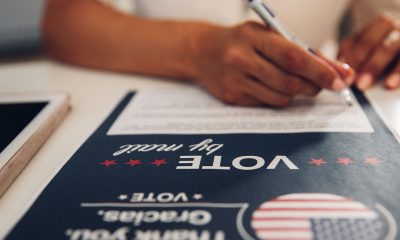National
Choosing Your Own: Definition of Race Becoming Fluid

In this image released by NBC News, former NAACP leader Rachel Dolezal appears on the “Today” show set on Tuesday, June 16, 2015, in New York. Dolezal was born to two parents who say they are white, but she chooses instead to self-identify as black. (Anthony Quintano/NBC News via AP)
JESSE J. HOLLAND, Associated Press
WASHINGTON (AP) — Rachel Dolezal, born to white parents, self-identifies as black — a decision that illustrates how fluid identity can be in a diversifying America, as the rigid racial structures that have defined most of this country’s history seem, for some, to be softening.
Dolezal resigned as the leader of the NAACP’s Spokane, Washington, branch after questions surfaced about her racial identity. When asked directly on NBC’s “Today” show Tuesday whether she is “an African-American woman,” Dolezal replied, “I identify as black.”
Her parents identified her as white with a trace of Native American heritage, and her mother, Ruthanne Dolezal, has said Rachel began to “disguise herself” as black after her parents adopted four black children more than a decade ago.
Dolezal isn’t the first person to make this type of change. Millions of Americans changed racial or ethnic identities between the 2000 and 2010 censuses, even though their choices may have contradicted what their skin color appeared to be, or who their parents said they are.
“It forces us to really question whether or not this biological basis for identity is a smart path to continue down in the future,” said Camille Gear Rich, a University of Southern California law and sociology professor who writes about elective race choices.
Americans have become comfortable with people self-identifying their race, Rich said, “but often that invocation of identity based on a biological claim isn’t backed up by anything else after the claim is made.”
In the United States, there is an expectation that people would have a biological connection to a racial or an ethnic identity they are claiming, said Nikki Khanna, a University of Vermont sociology professor. She co-authored a 2010 study that found increasing numbers of biracial adults were choosing to self-identify as multiracial or black instead of white.
“There really is no biological basis to race, but what I’m saying is that in our society the everyday person tends to think race must have some link to ancestry,” Khanna said. “So we expect that when people self-identify with a particular group they must have some ancestral link to that group.”
In the past, race was determined mostly by what other people thought a person was. For example, the Census Bureau’s enumerators would determine on their own what a person’s race was, and classify them as such. By the 1960s and 1970s, census officials were allowing people to self-identify.
Currently, the Census Bureau allows people to choose a racial category, or even multiple categories, to which they think they belong. The census identifies races as white; black or African-American; American Indian or Alaska Native; Asian; Native Hawaiian or Other Pacific Islander; and “some other race” for those claiming more than one race. There is also a Hispanic ethnic category.
People have been using that freedom since the early 2000s to move back and forth. They switched between races, moved from multiple races to a single race or back, or decided to add or drop Hispanic ethnicity from their identifiers on census forms.
Last year, a study showed that 1 in 16 people — or approximately 9.8 million of 162 million — who responded to both the 2000 and 2010 censuses gave different answers when it came to race and ethnicity. In addition, in the 2010 census, more than 21.7 million — at least 1 in 14 — went beyond the standard labels and wrote in such terms as “Arab,” ”Haitian,” ”Mexican” and “multiracial.”
Dolezal, 37, said Tuesday that published accounts described her first as “transracial,” then “biracial,” then as “a black woman.” ”I never corrected that,” she conceded, adding that “it’s more complex than being true or false in that particular instance.”
She and her parents have disagreed about her backstory. Dolezal says she started identifying as black around age 5, when she drew self-portraits with a brown crayon. Her mother told Fox News on Tuesday that’s not true.
Dolezal has gotten support from some in the black community, who say she should be allowed to self-identify as she pleases. However, other African-Americans say she is “passing” — a term mainly used to describe blacks who looked white enough to deny their African ancestry — and should not claim a racial identity that she cannot prove.
She isn’t the only person who has faced that accusation. An opponent of Houston Community College trustee Dave Wilson complained that campaign mailings Wilson sent to voters in the predominantly black district implied Wilson, who is white, was black. U.S. Sen. Elizabeth Warren of Massachusetts faced questions about her Native American ancestry during her last election after being listed as such in several law school directories.
Some people have used their ability to self-identify as another race simply to get access to resources aimed at minorities, Rich said, but “race is something that is a social contract and it is not something that you just passively inhabit.”
That’s why Rich said she isn’t comfortable with people announcing themselves as a member of a community. “There might be some spaces in which Rachel gets to be a black person, but I want to be very careful about any context in which she is taking away resources from people who have come from a more subordinated experience,” she said.
___
Jesse J. Holland covers race, ethnicity and demographics for The Associated Press. Contact him on Twitter at http://www.twitter.com/jessejholland.
Copyright 2015 The Associated Press. All rights reserved. This material may not be published, broadcast, rewritten or redistributed.
Activism
Ann Lowe: The Quiet Genius of American Couture
Lowe was born in Clayton, Alabama, into a family of gifted seamstresses. Her mother and grandmother were well-known dressmakers who created exquisite gowns for women in the area. By the time Lowe was a young girl, she was already showing extraordinary talent — cutting, sewing, and decorating fabric with a skill that far exceeded her age. When her mother died unexpectedly, Lowe – only 16 years old then – took over her mother’s sewing business, completing all the orders herself.
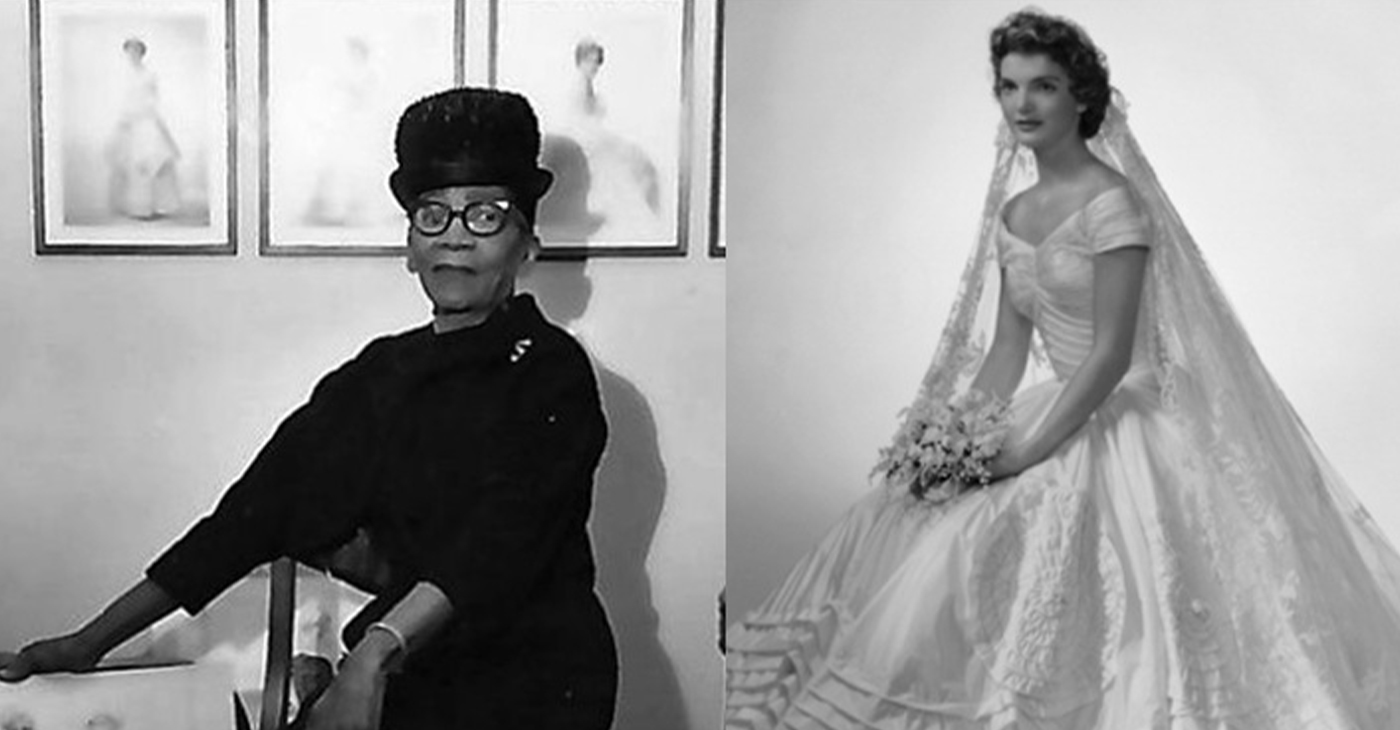
By Tamara Shiloh
Ann Cole Lowe, born Dec.14, 1898, was a pioneering American fashion designer whose extraordinary talent shaped some of the most widely recognized and celebrated gowns in U.S. history.
Although she designed dresses for society’s wealthiest families and created masterpieces worn at historic events, Lowe spent much of her life in the shadows — uncredited, underpaid, yet unmatched in skill. Today, she is celebrated as one of the first nationally recognized African American fashion designers and a true visionary in American couture.
Lowe was born in Clayton, Alabama, into a family of gifted seamstresses. Her mother and grandmother were well-known dressmakers who created exquisite gowns for women in the area. By the time Lowe was a young girl, she was already showing extraordinary talent — cutting, sewing, and decorating fabric with a skill that far exceeded her age. When her mother died unexpectedly, Lowe – only 16 years old then – took over her mother’s sewing business, completing all the orders herself. This early responsibility would prepare her for a lifetime of professional excellence.
In 1917, Lowe moved to New York City to study at the S.T. Taylor Design School. Although she was segregated from White students and forced to work separately, she, of course, excelled, graduating earlier than expected. Her instructors quickly recognized that her abilities were far above the typical student, especially her skill in hand-sewing, applique, and intricate floral embellishment – techniques that would become her signature.
Throughout the 1920s and 1930s, she designed gowns for high-society women in Florida and New York, operating boutiques and working for prestigious department stores. Her reputation for craftsmanship, originality, and elegance grew increasingly. She was known for creating gowns that moved beautifully, featured delicate hand-made flowers, and looked sculpted rather than sewn. Many wealthy clients specifically requested “an Ann Lowe gown” for weddings, balls, and galas.
Her most famous creation came in 1953: the wedding gown worn by Jacqueline Bouvier when she married Massachusetts Sen. John F. Kennedy. The dress – crafted from ivory silk taffeta with dozens of tiny, pleated rosettes – became one of the most photographed bridal gowns in American history. Despite this achievement, Lowe received no public credit at the time. When a flood destroyed her completed gowns 10 days before the wedding, she and her seamstresses worked day and night to remake everything – at her own expense. Her dedication and perfectionism never wavered.
She eventually opened “Ann Lowe Originals,” her own salon on New York’s Madison Avenue. She served clients such as the Rockefellers, DuPonts, Vanderbilts, and actresses like Olivia de Havilland. Yet even with her wealthy clientele, she struggled financially, often undercharging because she wanted every dress to be perfect, even if it meant losing money.
Lowe’s contributions were finally recognized later in life. Today, her exquisite gowns are preserved in museums, including the Smithsonian National Museum of African American History and Culture and the Metropolitan Museum of Art.
In the last five years of her life, Lowe lived with her daughter Ruth in Queens, N.Y. She died at her daughter’s home on Feb. 25, 1981, at the age of 82, after an extended illness.
Activism
Oakland Post: Week of December 10 – 16, 2025
The printed Weekly Edition of the Oakland Post: Week of – December 10 – 16, 2025
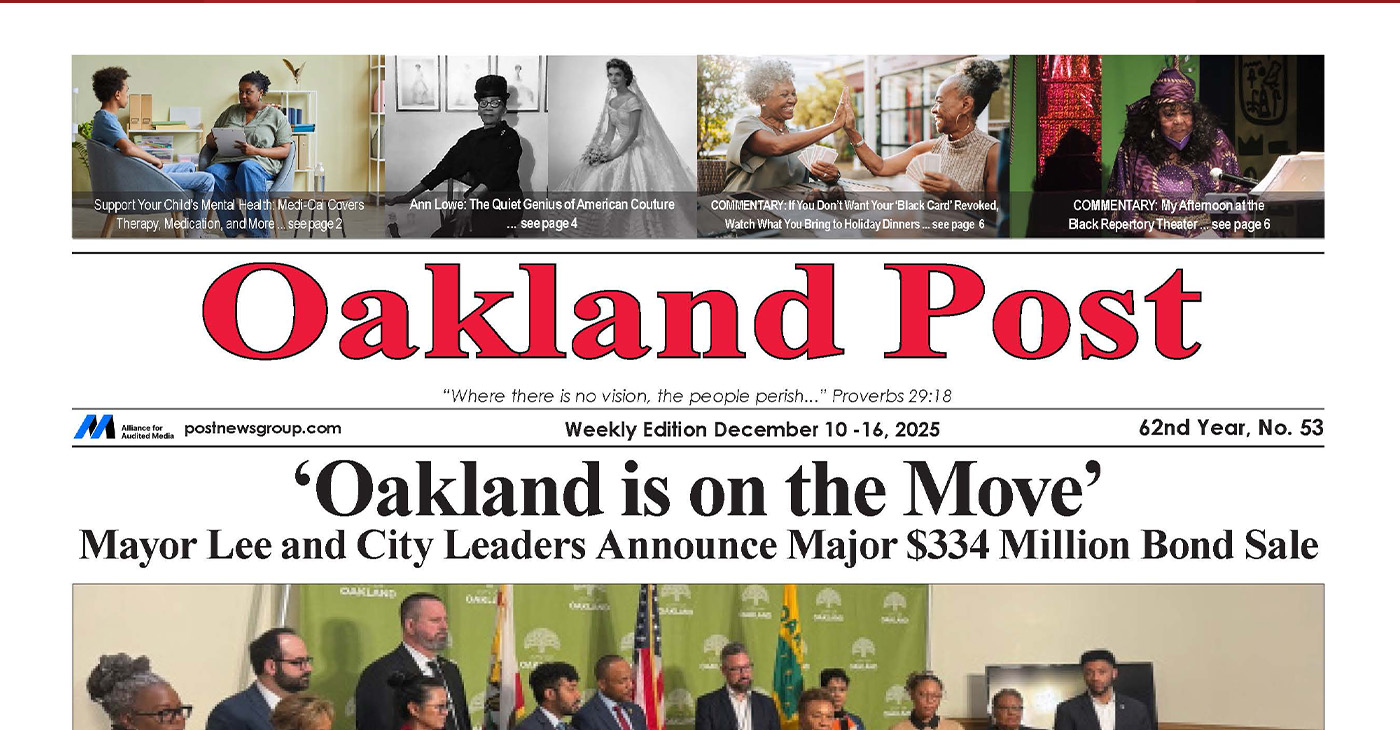
To enlarge your view of this issue, use the slider, magnifying glass icon or full page icon in the lower right corner of the browser window.
Alameda County
Seth Curry Makes Impressive Debut with the Golden State Warriors
Seth looked comfortable in his new uniform, seamlessly fitting into the Warriors’ offensive and defensive system. He finished the night with an impressive 14 points, becoming one of the team’s top scorers for the game. Seth’s points came in a variety of ways – floaters, spot-up three-pointers, mid-range jumpers, and a handful of aggressive drives that kept the Oklahoma City Thunder defense on its heels.

By Y’Anad Burrell
Tuesday night was anything but ordinary for fans in San Francisco as Seth Curry made his highly anticipated debut as a new member of the Golden State Warriors. Seth didn’t disappoint, delivering a performance that not only showcased his scoring ability but also demonstrated his added value to the team.
At 35, the 12-year NBA veteran on Monday signed a contract to play with the Warriors for the rest of the season.
Seth looked comfortable in his new uniform, seamlessly fitting into the Warriors’ offensive and defensive system. He finished the night with an impressive 14 points, becoming one of the team’s top scorers for the game. Seth’s points came in a variety of ways – floaters, spot-up three-pointers, mid-range jumpers, and a handful of aggressive drives that kept the Oklahoma City Thunder defense on its heels.
One of the most memorable moments of the evening came before Seth even scored his first points. As he checked into the game, the Chase Center erupted into applause, with fans rising to their feet to give the newest Warrior a standing ovation.
The crowd’s reaction was a testament not only to Seth’s reputation as a sharpshooter but also to the excitement he brings to the Warriors. It was clear that fans quickly embraced Seth as one of their own, eager to see what he could bring to the team’s championship aspirations.
Warriors’ superstar Steph Curry – Seth’s brother – did not play due to an injury. One could only imagine what it would be like if the Curry brothers were on the court together. Magic in the making.
Seth’s debut proved to be a turning point for the Warriors. Not only did he contribute on the scoreboard, but he also brought a sense of confidence and composure to the floor.
While their loss last night, OKC 124 – GSW 112, Seth’s impact was a game-changer and there’s more yet to come. Beyond statistics, it was clear that Seth’s presence elevated the team’s performance, giving the Warriors a new force as they look to make a deep playoff run.
-
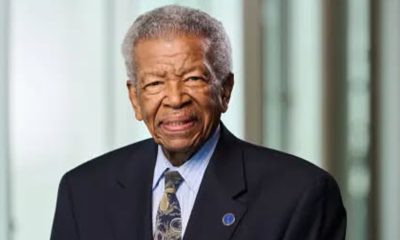
 Activism4 weeks ago
Activism4 weeks agoIN MEMORIAM: William ‘Bill’ Patterson, 94
-
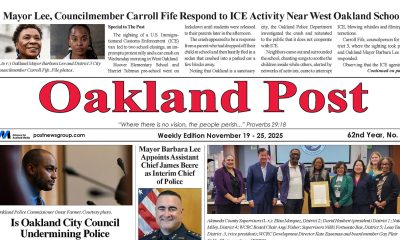
 Activism3 weeks ago
Activism3 weeks agoOakland Post: Week of November 19 – 25, 2025
-

 #NNPA BlackPress4 weeks ago
#NNPA BlackPress4 weeks agoBeyoncé and Jay-Z make rare public appearance with Lewis Hamilton at Las Vegas Grand Prix
-

 #NNPA BlackPress2 weeks ago
#NNPA BlackPress2 weeks agoLIHEAP Funds Released After Weeks of Delay as States and the District Rush to Protect Households from the Cold
-

 #NNPA BlackPress4 weeks ago
#NNPA BlackPress4 weeks agoLewis Hamilton set to start LAST in Saturday Night’s Las Vegas Grand Prix
-

 Alameda County2 weeks ago
Alameda County2 weeks agoSeth Curry Makes Impressive Debut with the Golden State Warriors
-
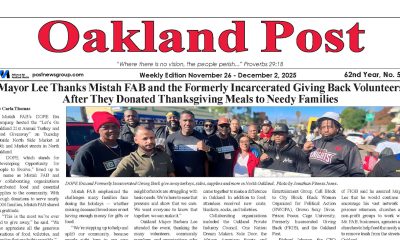
 Activism3 weeks ago
Activism3 weeks agoOakland Post: Week of November 26 – December 2, 2025
-

 #NNPA BlackPress2 weeks ago
#NNPA BlackPress2 weeks agoSeven Steps to Help Your Child Build Meaningful Connections

